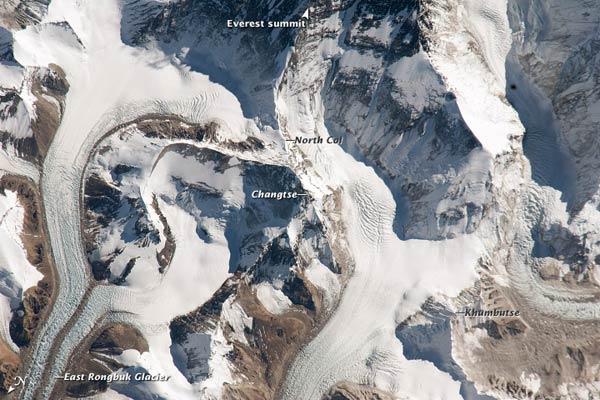Everest Overcrowding: Can It Be Fixed?


In the quest to explain why four climbers died on one of Mt. Everest's deadliest days ever, much attention has gone to overcrowding on the 29,035-foot peak.
When the season's first good weather window opened on Friday and Saturday, about 150 climbers lined up to go for the summit. Many had to wait an hour or more for their turn. And some ended up making the final push, with dwindling oxygen supplies, in the late afternoon -- far too late to be safe. The four climbers who died over the weekend fell to exhaustion and altitude sickness.
To prevent these kinds of tragedies from happening in the future, some mountaineers have proposed imposing limits or schedules that would control how many climbers are allowed on Everest's slopes and ridges at a time to avoid a traffic jam. For now, regulations in the Himalayas are minimal.
Yet, some guides think it's unlikely that stricter rules will ever govern Mt. Everest. Even if there were firmer rules, climbers would likely still make bad decisions about weather, gear, food and other critical details.
"From a logistical standpoint, everything becomes distilled down into a summit bid, and that has a lot of moving pieces," said Eric Simonson, Himalayan program director at International Mountain Guides in Ashford, Wash. "What happened most recently wasn't a regulation issue. It was that a bunch of teams saw the same thing, that there was a likelihood of good weather, and they tried to put themselves into position to take advantage of it."
"This happens every year when teams go up and try to take advantage of good weather," he added. "Had these deaths not occurred, I don't think there would have been anything remarkable about this past weekend. It would've been a perfectly normal big day."
Everest isn't a total free-for-all. To climb the world's tallest mountain, teams must apply months in advance for a climbing permit from Nepal's Ministry of Tourism.
Get the world’s most fascinating discoveries delivered straight to your inbox.
Permit prices start at about $10,000 per person. And applications must include descriptions of each climber's experience. The Nepalese government can theoretically reject an application, but that doesn't seem to happen much.
Once a permit is issued, each team is assigned a liaison officer who joins the group at Base Camp and makes sure that no unapproved climbers attempt to join the summit bid at the last minute. There is, however, no limit to the number of permits that can be issued for a season. Nor is there a limit to how many teams can attempt to summit on a given day.
Trying to create limits and schedules like these would be logistically difficult in a mountainous region of a developing country. Trying to enforce them would probably be harder, and not just because of the resources involved. The nature of climbing in general and the culture of Everest in particular are, in many ways, antithetical to rules and regulations.
"There is the larger philosophy of what the sport is," said Gordon Jannow, director of programs at Alpine Ascents International, a guiding service based in Seattle, Wash., whose mountain offerings include Everest. "It has inherent danger. It's about independence and going up mountains and so on, so there's a limit to how regulation fits the style of the sport."
Perhaps the best place for rules to interfere, Jannow said, would be in the area of guide-to-climber ratios. Denali National Park in Alaska, for example, authorizes just a handful of guide services for Mt. McKinley, and those companies must offer one guide for every two climbers. On Washington State's Mount Rainer, the required ratio for guided climbs is three-to-one. Experienced climbers don't need to hire guides.
On Everest, guide companies set their own rules, with the number of guides ranging from one for every climber to one for every seven or more climbers. Some send only Sherpas to guide clients up the mountain. And depending on their level of training, communication and rescue skills can be limited.
Other groups go independently and make decisions on their own. All four deaths last weekend happened in groups without trained guides, Simonson said.
Whether trekking with guides or independently, he added, climbers need to pay attention to the time, the weather, how much oxygen they have left and how their bodies feel. Those guidelines are true, regardless of whether official regulations exist or not.
If done safely, a trip to Everest can be transformative.
"Whether they summit or not, people come away from the mountain changed," said Simonson, who has participated in 10 expeditions to Everest, made it to the summit once, and turned around close to the top three times. "If you've ever dreamed about being an astronaut, it's about as close as you're going to get, being at 30,000 feet looking up into space."
"It's a remarkable experience, and I hate to see it portrayed in negative terms," he added, even though the risks are real and deserving of respect.
"Really, at the end of the day, this is one of the few remaining places in life that people have to step up and take personal responsibility."
This story was provided by Discovery News.


